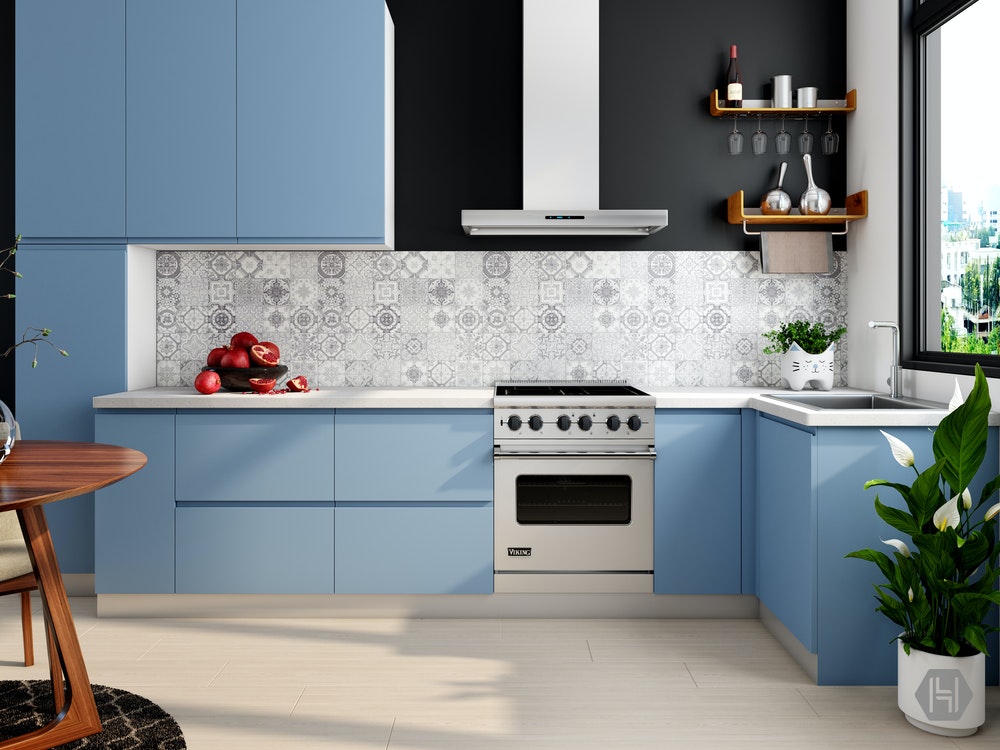We all want the Australian government to focus on climate issues, and they have been catching a lot of criticism for gas plants, etc. I am going systematically through my apartment to make a more eco-friendly kitchen because I want to and well frankly I need to walk the talk.
I feel like I need to make more of an effort as well. One step at time, when something needs replacing I look for a sustainable alternative. I think sustainable gets a bad rep for being synonymous with expensive and I found that is not at all the case. So no more excuses!
Eco living terminology
So a quick summary of a few important words when we discuss an eco-friendly kitchen.
Biodegradation
able of being decomposed by bacteria or other living organisms and therefore avoiding pollution. It’s a natural chemical process. Goods are designed to break down in landfills.
Compostable
This is biodegradation however under certain induced conditions at the local recycling area. It requires processing to degrade or reuse.
Eco-friendly
That means not harmful to the environment. Literally means earth-friendly, contributing to green living and practices that help conserve resources like water and energy. Prevents pollution to air, water and land. Also called low-impact living.
Sustainable
Can also be called “living green” or “green living”. Products/goods are made with eco-friendly resources such as sustainable grown crops or recycled materials. They provide environmental, social and economic benefits while protecting public health and environment over their whole life cycle, from the extraction of raw materials until the final disposal.
Zero waste
This is a philosophy that encourages repurpose, reuse and recycle of used products and no trash is sent to landfills, incinerators nor the ocean.
Daily eco-friendly changes
How do you start the whole process? Here are three very simple habits to change in your daily life.
Stop single use
This is the biggest habit I changed with the largest impact. I used ziplock bags like my life depended on them, my plastic waste was extreme. Now I use reusable containers and reusable silicone bags and lids. I ditched the kitchen paper towels and wet wipes and happily used washable washcloths.
Ditch the chemicals
You can of course replace them with eco-friendly soaps, some are more expensive than others, however I wanted to try making my own. I started cleaning my kitchen counters with this homemade solution: 1 cup white vinegar, 2 cups of water and a few drops of essential oil or lemon juice in a glass spray bottle. It works brilliantly. Make sure you check the composition of your kitchen countertops if it is safe to use vinegar. And don’t wipe your eyes when you use vinegar (I learned that the hard way).
Just do it
Start small, and keep going. The point is to get started, I started very simply by recycling plastic and was appalled to see how much plastic I trashed weekly. That inspired me to look for substitutes and alternatives. I am not at all yet where I want to be however I started.
So I did some research and found 15 easy and budget friendly alternatives to everyday kitchen habits that I changed without any effort and so can you.

15 steps to have a more eco-friendly kitchen
Let’s go through 15 steps to have a more eco-friendly kitchen, without massive costs or lifestyle changes. The steps I’ll cover, are:
- Natural products
- Straws
- Towels and wipes
- Choose wood
- Plastic free food storage
- Switch bulbs
- Mats not paper
- GYO
- Cloth not paper napkins
- Filter the tap
- Utensil choice
- Recycled sponges
- Energy efficient appliances
- Recycle
- Pots and pans
So now let’s get into the detail!
Natural products
Clean with natural cleaning products. I use a homemade recipe to clean my kitchen countertops. Cause think about it, you clean with chemicals that yes kill bacteria however leave chemicals on the surface where you then place your food on.
I mix 1 part white vinegar with 2 parts water, a splash of lemon juice and 10 drops of lavender essential oil. It works like a charm. There are plenty of over the counter non-harmful products you can get if you don’t feel like making your own.
Straws
Another step to a more eco-friendly kitchen, is to start to always use reusable straws. This is a no-brainer. You can buy reusable straws everywhere now.
Towels and wipes
Ditch the paper towels and wipes. I was using so many disposable kitchen wipes, it was disgraceful. I have switched to washable and reusable dish towels.
Choose wood
Use wooden cutting boards. I love beautiful wooden boards to serve tapas on however I switched years ago to Epicurean non-slip cutting boards. They started out as a skate ramp building company and moved into using leftover wood composite for cutting boards, and silicon anti-slip corners.
Plastic free food storage
Using and recycling jars is something I’ve always done. Just because I like storing things in jars, I like the aesthetic. Full disclosure: I did 2 years ago updated my pantry cabinet and bought plastic containers as the glass containers would have been too heavy for my small cabinet.
I no longer use ziplock bags nor plastic wrap. I got some reusable silicon pouches and covers, they work great.
Switch bulbs
Switch your light bulbs to LED’s. That was easy as I don’t think we’ve any other type of light bulbs in Australia. They last forever, I think some I have not changed in 10 years.
Mats not paper
Replace parchment paper with baking mats. I have been doing that for years and I think it gives an even bake to be honest. Us food bloggers love using white baking paper as prop in our photos, instead of throwing them away each time, I now reuse them.
GYO
Grown your own herbs. I grew indoors in winter and outdoors in summer. Check out my tips for indoor herb gardens. I also grow a few of my own veg like radishes and green beans every year. So satisfying to eat what you grow.
Cloth not paper napkins
Elevate your dinner table with cloth napkins, ditch the paper. I love silly, funny quote paper napkins to serve with cocktails to guests. However, I use a cloth napkin daily . When setting a gorgeous table, cloth napkins are for sure the best choice, even ascetically.
Filter the tap
Filter and drink tap water. I easily drank 1.5l to 2l bottled water a day, that was a lot of plastic. I tried for 3 months last year to drink only filtered tap water. The result was I barely drank water anymore after a few weeks and that was not good either. I just didn’t like the taste of my tap water. I added fruit to flavour the water like lemon, lime, cucumber, red berries, peaches, watermelon, etc. However, sometimes I just want a big glass of water. I have reduced my bottled water consumption by 3/4, so that’s a GREAT effort. I always have carafes of flavoured tap water in my fridge and I drink a lot of tea (warm and cold).
Utensil choice
Use durable utensils. I still have a few plastic and silicone utensils however use mostly wood and stainless steel ones. Buying good quality is key to longevity.
Recycled sponges
You can replace sponges. This is a major change I made when I read it takes 500 to 1000 years for a sponge to degrade. Look for sponges made from recycled plastic or that are 100% biodegradable.
Energy efficient appliances
Choose energy-efficient appliances – run the dishwasher when full. We changed my washing machine last year, it had served me faithfully for 16 years. The new one is a very energy-efficient machine with a larger capacity load and love it. I don’t have a dryer, I just hang clothes up to dry. I fill the dishwasher all week long and run it only once a week.
Recycle
You can only use the excuse of having a very small apartment and kitchen for a certain time, before the guilt overthrows you (at least for me!). I now recycle plastic and cans ( the blue recycle bag). I’m working on recycling paper and cardboard more efficiently as well.
My empty bottles of bubbles and wine, I shamelessly threw away in the bin. I now separate them out and bring them to the glass containers at the end of the block.
Pots and pans
When making your meals, use durable pots and pans. 15 years ago, I purchased some expensive pots and pans, and they are still going strong. I think the key is to buy something durable and that unfortunately does require a bit of an investment. However, think of it this way: you will never have to buy a new pot or pan again.
In Summary
There you have it. We’ve explored the main daily habits, the philosophy and the 15 steps to a more eco-friendly kitchen, being;
- Natural products
- Straws
- Towels and wipes
- Choose wood
- Plastic free food storage
- Switch bulbs
- Mats not paper
- GYO
- Cloth not paper napkins
- Filter the tap
- Utensil choice
- Recycled sponges
- Energy efficient appliances
- Recycle
- Pots and pans
All the best of luck with changing your own lifestyle to be more environmentally conscious and climate friendly.







